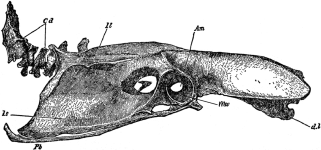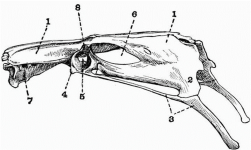Fred Ruhe
Well-known member

Alan Feduccia, 2023
The Avian Acetabulum: Small Structure, but Rich with Illumination and Questions
Diversity 16(1): 20
doi: https://doi.org/10.3390/d16010020
https://www.mdpi.com/1424-2818/16/1/20
Abstract
The idea that birds are maniraptoran theropod dinosaurs is now considered an evolutionary consensus. An “open” (i.e., completely or substantially perforate) acetabulum is considered an important synapomorphy verifying the bird–dinosaur nexus. Here, I present anatomical evidence from the acetabulum and its important appurtenances, the supracetabular crest and the antitrochanter, that hip anatomy differs substantially between dinosaurs and birds. Given the thin bone of the acetabular walls and the varied tissue, both hard and soft, in the acetabular region and especially the lower part of the basin, it is apparent that many avian skeletons exhibit some anatomical loss of soft tissue and thin bone, some perhaps related to changes in gait, but also in part related to the dramatic trend in bone reduction associated with flight, especially in more advanced crown taxa. Many basal birds and early diverging neornithines tend to have a nearly closed or partially closed acetabula, thus rendering the current terms “open” or “closed” acetabula inaccurate; they should be modified or replaced. Given new evidence presented here, the relationship of “dinosaurs” and birds must be re-evaluated.
Enjoy,
Fred
The Avian Acetabulum: Small Structure, but Rich with Illumination and Questions
Diversity 16(1): 20
doi: https://doi.org/10.3390/d16010020
https://www.mdpi.com/1424-2818/16/1/20
Abstract
The idea that birds are maniraptoran theropod dinosaurs is now considered an evolutionary consensus. An “open” (i.e., completely or substantially perforate) acetabulum is considered an important synapomorphy verifying the bird–dinosaur nexus. Here, I present anatomical evidence from the acetabulum and its important appurtenances, the supracetabular crest and the antitrochanter, that hip anatomy differs substantially between dinosaurs and birds. Given the thin bone of the acetabular walls and the varied tissue, both hard and soft, in the acetabular region and especially the lower part of the basin, it is apparent that many avian skeletons exhibit some anatomical loss of soft tissue and thin bone, some perhaps related to changes in gait, but also in part related to the dramatic trend in bone reduction associated with flight, especially in more advanced crown taxa. Many basal birds and early diverging neornithines tend to have a nearly closed or partially closed acetabula, thus rendering the current terms “open” or “closed” acetabula inaccurate; they should be modified or replaced. Given new evidence presented here, the relationship of “dinosaurs” and birds must be re-evaluated.
Enjoy,
Fred





